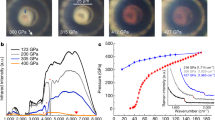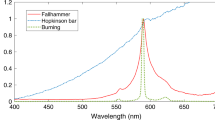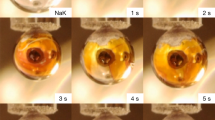Abstract
IN a recent very interesting letter to NATURE (Sept. 1, p. 313) E. Gaviola reports the occurrence of the NH-band λ3360-70, using Wood's arrangement for the optical excitation of mercury vapour, when nitrogen and hydrogen are admitted. From the fact that the intensity of the band is proportional to the square of the intensity of the exciting light, Gaviola concludes that the atomic nitrogen is formed by three-body collisions of N2-molecules with two excited mercury atoms. It follows that the dissociation energy of nitrogen is less than 9.8 volts, whereas Sponer (Zeits. f. Phys., 34, 622; 1925), according to her interpretation of the nitrogen afterglow, has calculated the value 11.4 volts. Moreover, the latter value is confirmed by a rough extrapolation of the curve for the frequency of vibration in the normal state of the nitrogen molecule (cf. H. Sponer, Zeits.f. Phys., 41, 611; 1927).
This is a preview of subscription content, access via your institution
Access options
Subscribe to this journal
Receive 51 print issues and online access
$199.00 per year
only $3.90 per issue
Buy this article
- Purchase on Springer Link
- Instant access to full article PDF
Prices may be subject to local taxes which are calculated during checkout
Similar content being viewed by others
Author information
Authors and Affiliations
Rights and permissions
About this article
Cite this article
HERZBERG, G. The Dissociation Energy of Nitrogen. Nature 122, 505–506 (1928). https://doi.org/10.1038/122505b0
Issue Date:
DOI: https://doi.org/10.1038/122505b0
Comments
By submitting a comment you agree to abide by our Terms and Community Guidelines. If you find something abusive or that does not comply with our terms or guidelines please flag it as inappropriate.



